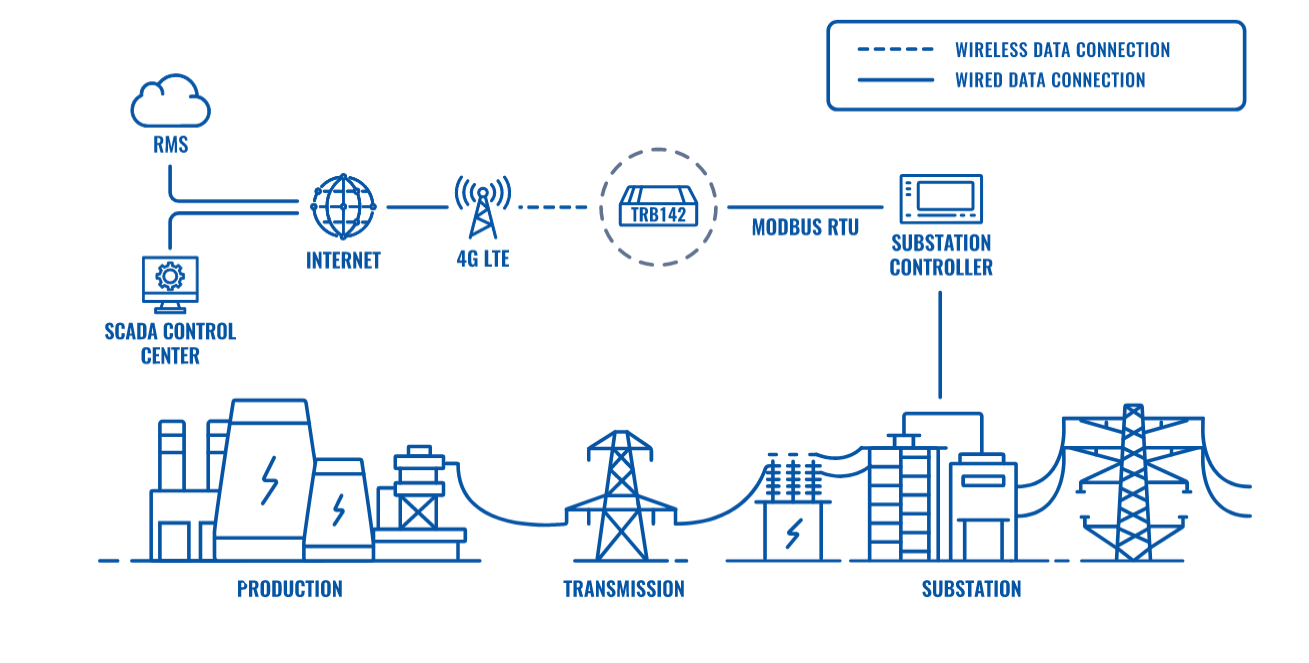Smart Grid & Substation communication
Summary
The energy market is one of the most crucial industry sectors enabling our everyday lives. It requires constant development and innovation to make it more accessible and efficient. Industrial Internet of Things is a movement towards more connectivity & control in every aspect of industry digitization, and the energy industry is no exception.
Challenge
Fundamentally, energy infrastructure consists of production & transmission. Nuclear, coal, gas energy plants and renewable energy installations together generate electricity and transmit it to the grid using series of high, medium and low voltage stations and substations eventually bringing power to homes and businesses around the world. All steps of production and transmission must be closely monitored and controlled to make sure the infrastructure is producing enough power that is distributed efficiently throughout the energy network. All of this would not be possible if all components of the grid would not be connected and controlled centrally by professional engineers and advanced SCADA systems. Substations have complex automation network that is managed by a substation controller. To enable smart grid, these must be connected to the central SCADA system via the Internet. Even when wired Internet connectivity is available, it is impossible to ensure 100% uptime which is required to be in control of the whole power generation and transmission infrastructure.
Solution
Integrators and energy operators around the world have recognized that cellular solutions, such as 4G LTE enabled gateways and routers, offer the most reliable connectivity and best availability for their complex substation systems. In many cases, substation controllers aren’t new, meaning that they feature serial interfaces for communication, such as RS232. TRB142 is a 4G LTE Cat1 enabled cellular gateway by Teltonika Networks able to connect legacy equipment via serial RS232 and manage connectivity with numerous industrial and networking protocols, such as Modbus RTU & MQTT. It also has advanced firmware security functions, such as firewall and multiple supported VPN services. Moreover, TRB142 can diagnose any connectivity and functionality issues and reboot separate modules of the gateway to restore service automatically without any interference from the operators. Finally, all TRB142 devices can be easily monitored and controlled from thousands of miles away with Teltonika Remote Management System, which can generate not only customizable alerts, reports, but also allows direct access to the substation controllers connected using TRB142 even without Public IP.
Topology

Benefits
- TRB142 is easy to set up, easy to install and even easier to maintain with full support for Teltonika Remote Management System. It is also simple to scale as multiple devices can be configured at once using RMS
- This gateway is very reasonably priced and features robust 4G LTE Cat1 – designed for serial interface communication where low data speeds are required.
- Advanced firmware functionality includes support for industrial, networking and remote management protocols, such as Modbus RTU, MQTT, DHCP, SNMP and features firewall and multiple supported VPN services.
Why teltonika networks?
TRB142 encompasses robust functionality and performance in a small and cost-efficient form factor. It follows the same product development philosophy as other much more sophisticated devices from Teltonika Networks portfolio; these gateways are reliable, secure and easy to use. Our industrial cellular gateways and routers are empowering thousands of smart grid infrastructure components around the globe. Contact us to find out more!

